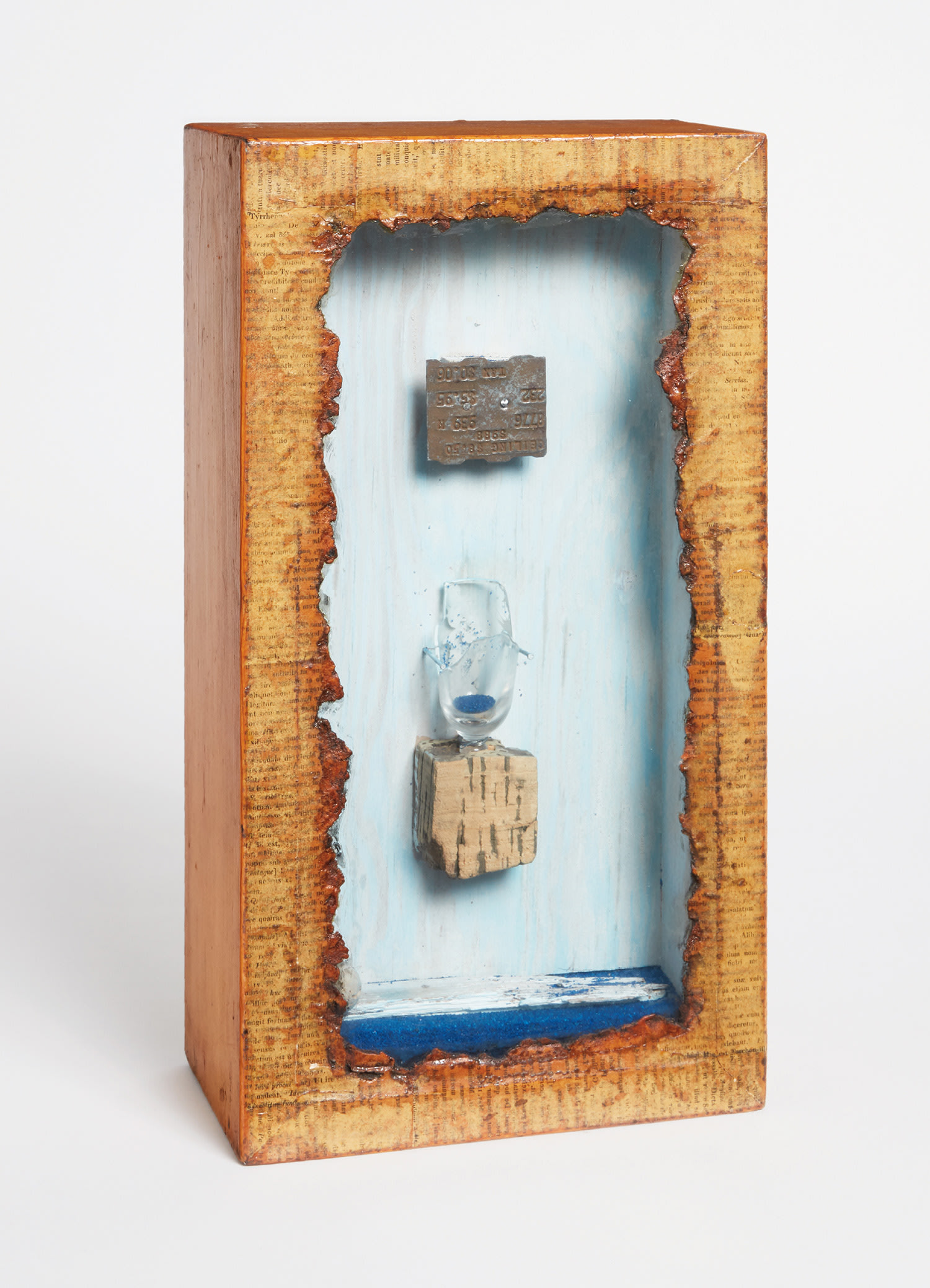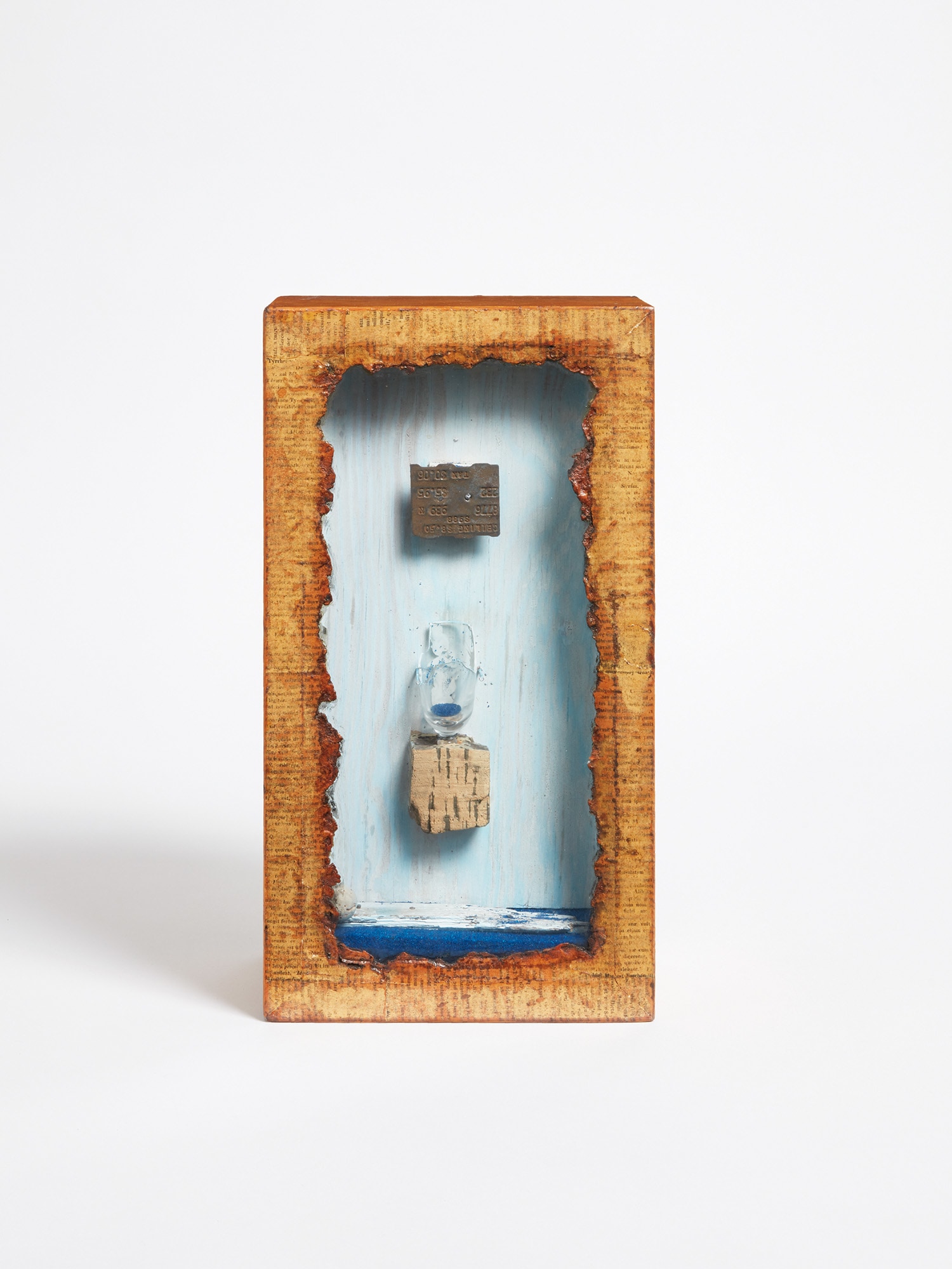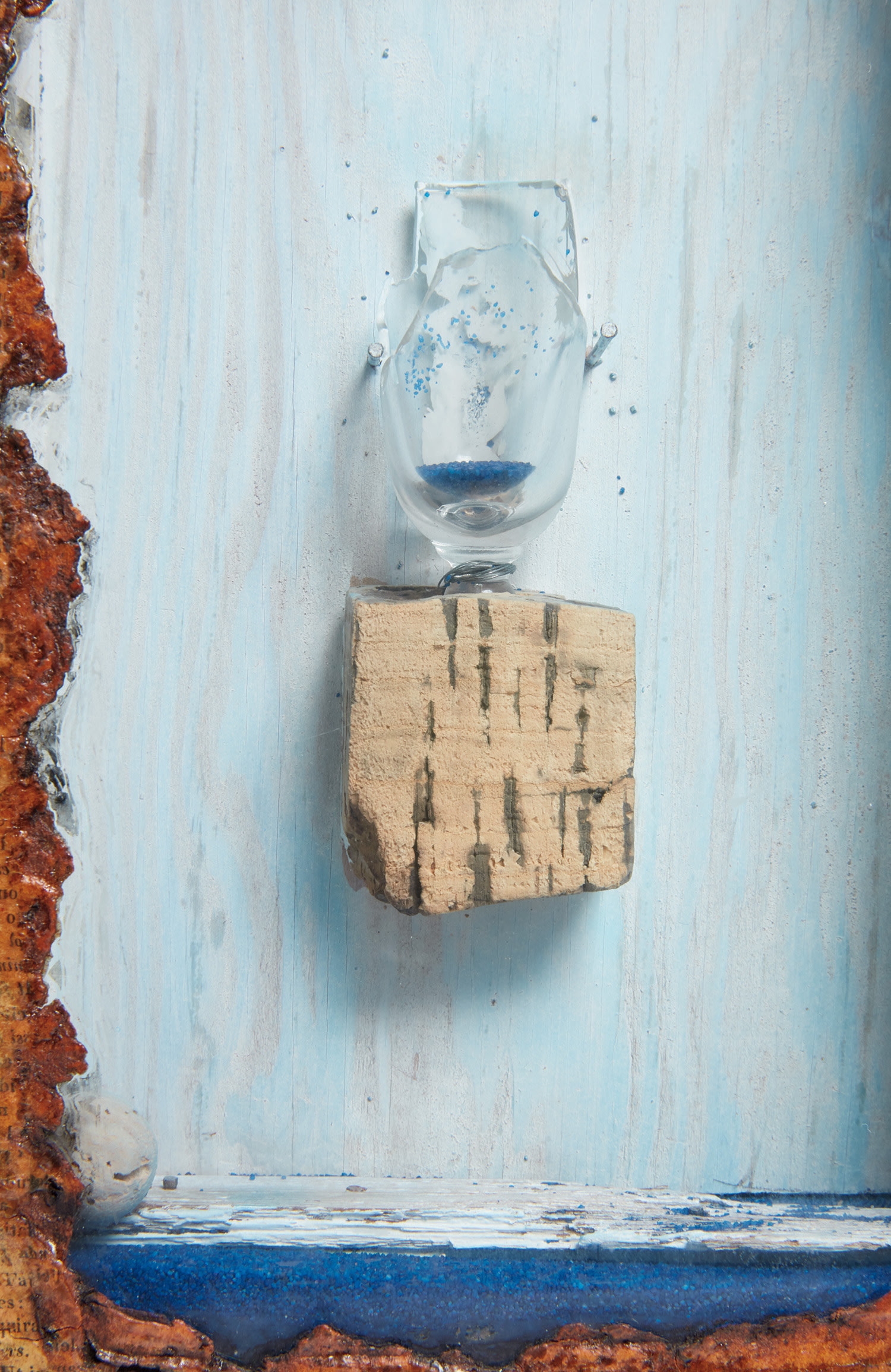





132
Joseph Cornell
Sandsifter Box
signed "Joseph Cornell" on a label affixed to the reverse
wood box construction with acrylic, cork, glass, lead, metal, printed paper collage and blue glass beads
14 x 7 1/2 x 4 1/8 in (36.5 x 19 x 10.5 cm)
Executed in 1952.